Kodiak Island
We spent 19 fabulous days in northern Alaska, highlighted by world renowned Denali National Park, a day of scenic flights and exploration in Gates of the Arctic National Park, the epic drive up the Dalton Highway to the Arctic Ocean and a week in Fairbanks waiting for repairs for the third member of our team, Tramp. Now we were heading south to the waterways, islands, glaciers and hidden secrets of southern Alaska as the summer came to a close, the birch and aspen started taking on fall colours and the temperature dropped. Our first target was Kodiak Island.
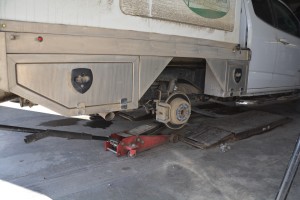
We had some work done on Tramp when we returned to Fairbanks, such as fix a slow leak in one of the tires…
The drive south from Fairbanks to Anchorage is one of the prettiest in Alaska, following fast moving rivers, through high mountains, past glacier-carved valleys and across uncountable streams and creeks. Or so they say. For the two days it took us to do the drive the clouds were so low, the rain so relentless, the temperature so chilly that we barely got a sense of this dramatic scenery.
At times there were major pull-outs to view Mount Denali to the north, all we saw was a blanket of white-grey clouds. We drove through Denali State Park which provided excellent facilities to explore the area on many walking trails, boat launches and picnic areas, we saw them through the pouring rain. It was grim.
We pulled into the historic and somewhat quirky town of Talkeetna, a former gold mining town and current launch pad for climbers to Denali, today a haven for day-tripping tourists from Anchorage who come by bus or train to see the mountains (ha!), have lunch in one of the many cute cafes and buy souvenirs. We came by Tramp but we did the same thing, enjoying caribou burgers at the old pub which was the home of the town’s former mayor – a cat. Yes, Talkeetna’s mayor was a cat until just recently when he died.
We motored past Anchorage, the state’s largest city at 300,000 and overwhelming economic centre, and camped on a cold and drizzly night on the shore of Turnagain Arm, an ocean inlet that leads to the Pacific Ocean. We watched a line of local fishermen fishing in the rain for silver salmon which were running on nearby Bird Creek. This Alaskan feature of fishermen almost shoulder to shoulder fishing when the salmon are running is referred to as combat fishing.

This couple hauls back their catch for the day – probably half a dozen beautiful silver salmon, great for eating
The next day we drove down to the mainland tip of the Kenai Peninsula to the end of the road and the town of Homer (the halibut fishing capital of the world!). The weather got marginally better as we progressed down this southern extension of the state, following the beautiful frothy Kenai River and stopping briefly at Ninilchik, the Russian community established over 100 years ago.
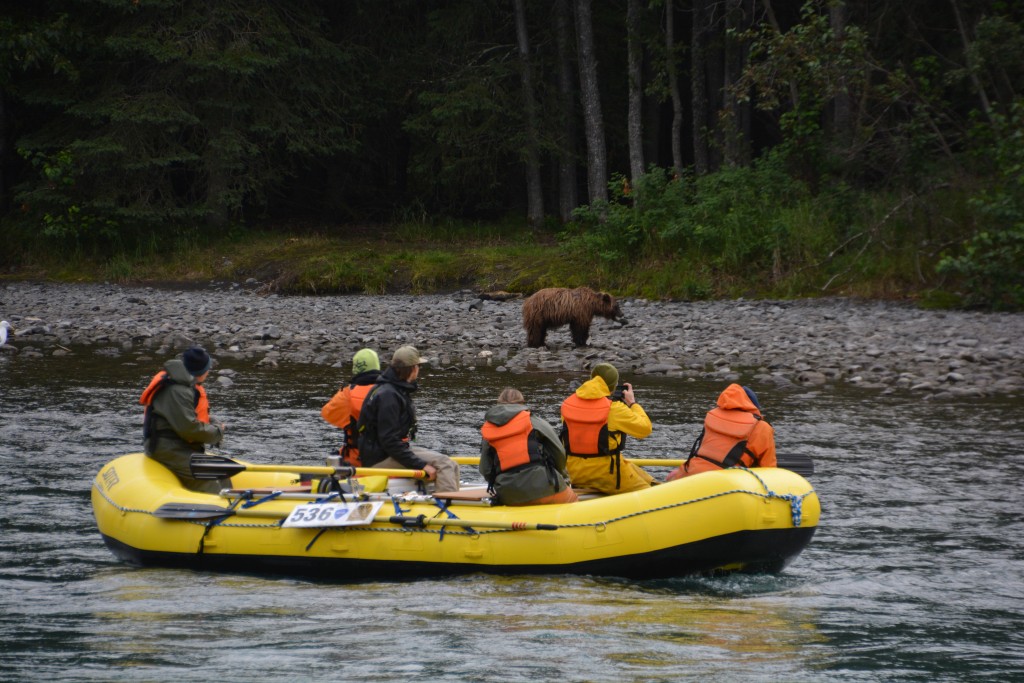
We stopped on the side of the road when we saw this young brown bear foraging for fish on the banks of the Kenai River and then this group came paddling by
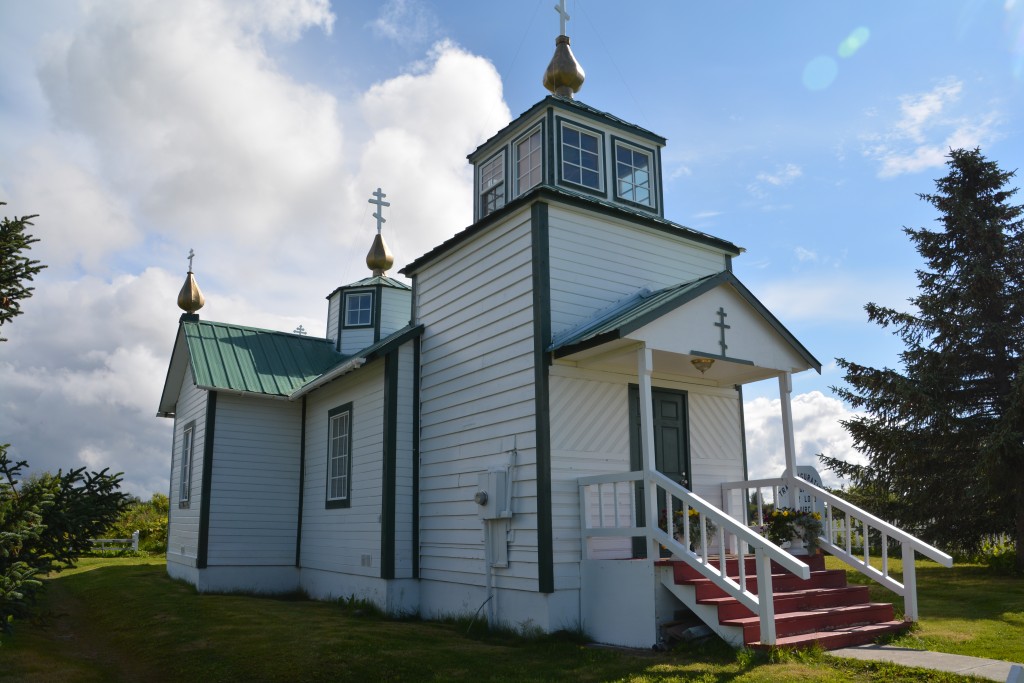
The beautiful Russian Orthodox church in Ninilchik, a community rich in history from the first white settlers in the area
Homer, or more specifically Homer Spit, is the end of the line. From here you either get on a ferry to go further south or turn around. We parked Tramp and jumped on the Tustemena, the Alaska Marine Highway’s ship which provides a link between the remote communities in the Aleutian Islands and civilisation. Our target was the third stop of the ferry’s trip, the thriving town of Kodiak on the huge island of Kodiak.
The Tustemena is a relatively small ship and only slightly younger than us but it headed southward past the last tip of mainland and then across the open seas to the Kodiak Island group. We slept well, stretching out in a booth designed for six in the open public area and the next morning watched with interest as we pulled into two native communities, Port Lions and Ouzinkie, and watched as people and supplies moved off and on the ship.
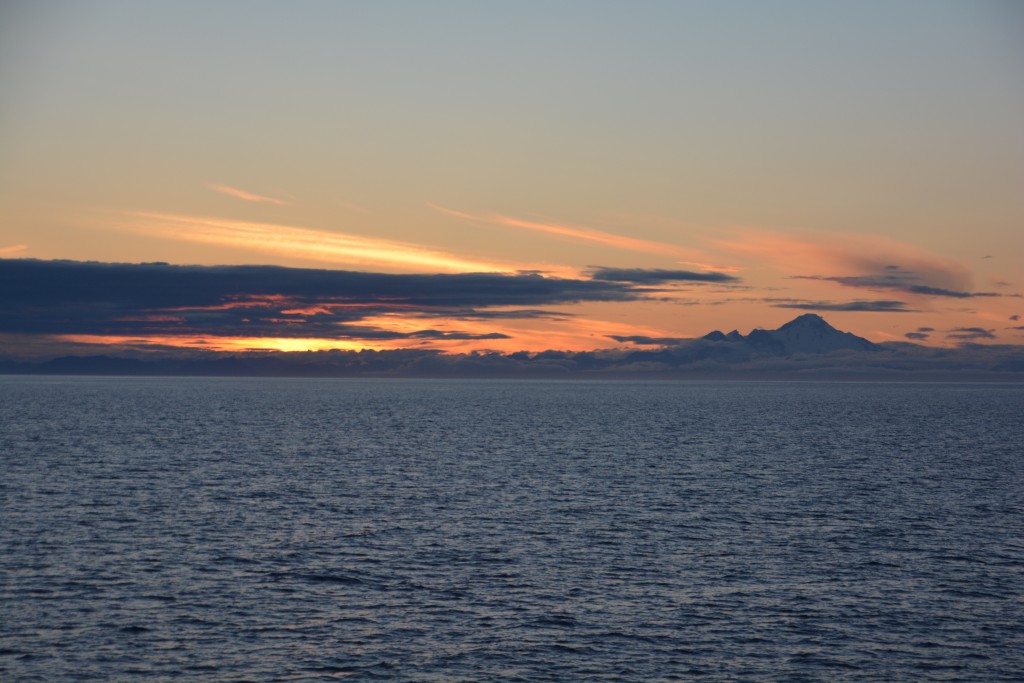
Our first sunset in months, mainly because we’ve moved a bit further south and the season is getting later
When people hear the word Kodiak they often think of the bears. The island of Kodiak is famous for its brown bears which grow up much bigger than the grizzly bears of northern Alaska because of their richer diet of fish, even though they are all the same species (as opposed to black bears which are smaller and a different species).
But bears have become a major theme of our trip and we came to Kodiak for a bear hunt. Unfortunately, or as it turned out – fortunately, the major salmon runs on Kodiak Island had started to slow down and the bears had started to disappear. But across the water in Katmai National Park, a park so remote there are no roads, infrastructure or ports, the pink salmon are still running and the bears are still in their late season fishing frenzy. So Julie and I jumped into our own four seater Cessna float plane with Scooter, our pilot, and Devon, our guide, and took off for a day of bear hunting.
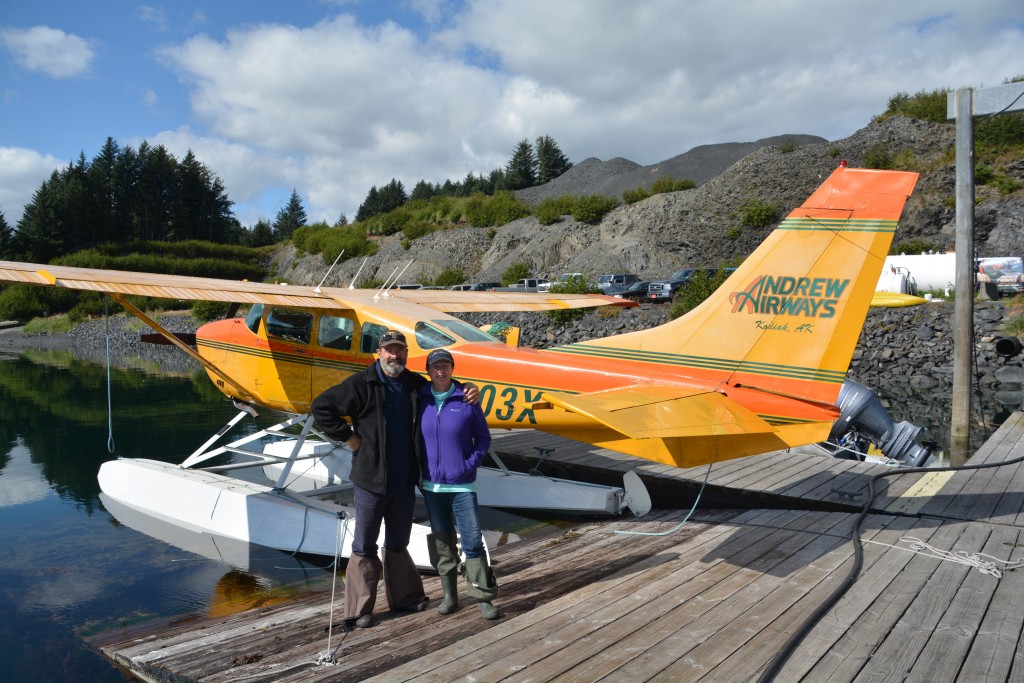
Ready for takeoff – we’re on another bear hunt, this time in remote Katmai National Park where the only way to get there is by boat or float plane
And what a day it turned out to be! Playing some strong cards to be the best day of our trip so far, the bear hunt was an extraordinary success. It’s not easy (for me) to part with the big bucks for such an excursion, especially when the outcome is somewhat unknown, but hey, when in Alaska…
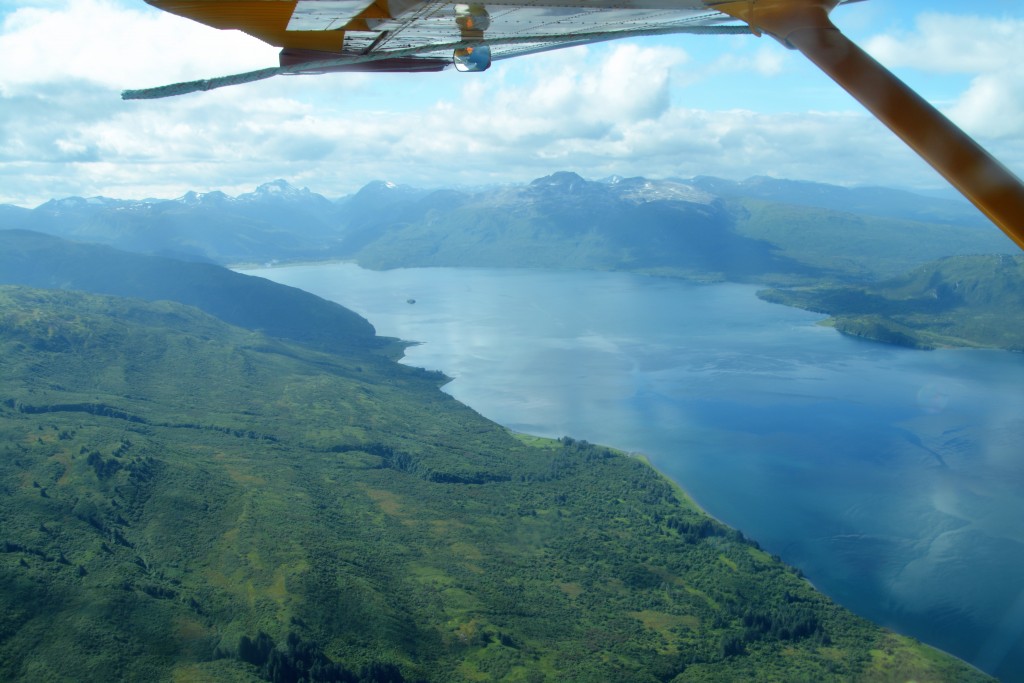
The flight over Kodiak Island was just stunning – uninhabited mountains, rivers and bays….except for about 3,500 bears that live there
We flew around the town of Kodiak with a population of over 10,000 and supporting the largest Coast Guard base in America, and over the island of Kodak, the second largest island in America, crossed the straight and came in view with Katmai National Park, a beautiful rugged land with snow-capped mountains and numerous dormant volcanoes. The Aleutian chain of islands is really just a string of volcanoes reaching into the Pacific Ocean and the land is almost completely uninhabitable for humans.
Scooter landed our plane on a glassy bay protected by small islands in a place called Geographic Harbour inside the national park and taxied into the shallow waters. From there Devon, Julie and I waded ashore in our hip-high waders, even at this stage spotting big brown bears foraging for salmon in the stream that flows into the bay. OMG, we’re walking straight towards hungry brown bears as if they are invisible, and hoping we are invisible to them.
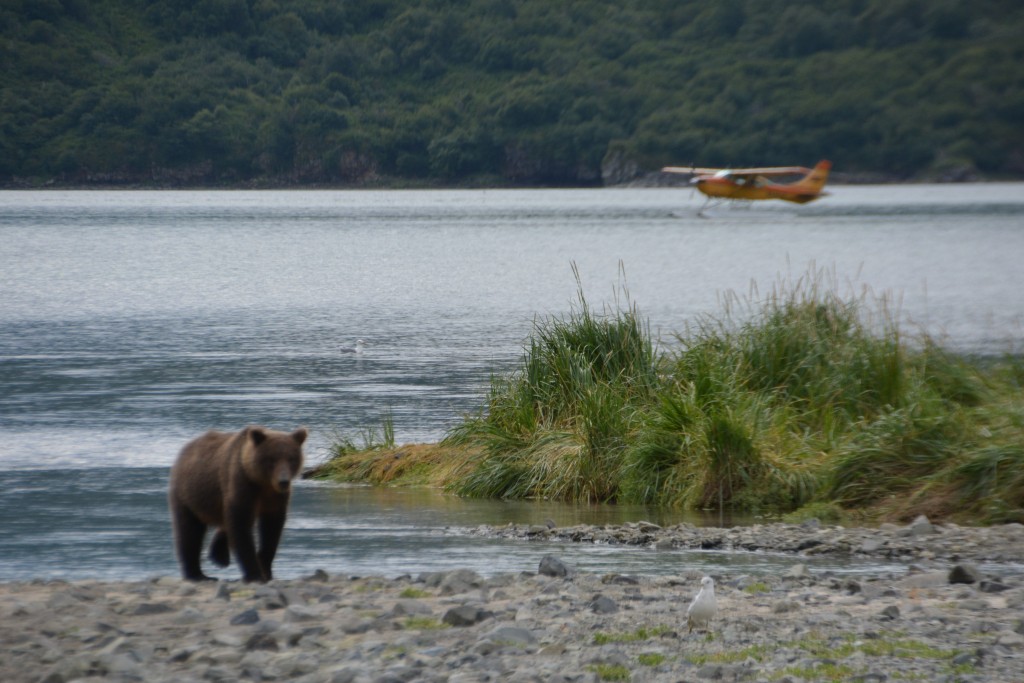
Now this is not a good situation – as soon as we walked ashore a bear comes up behind us and gets between us and our rescue plane
But with Devon’s pistol and his youthful two months of bear guiding experience we positioned ourselves in the middle of this gravel spit, the small fresh water stream flowing down on both sides of us. The pink salmon, or humpies as they are locally called, were spawning upstream, as they have done for eons, and the bears had come down to catch their fill, as they have also done for centuries. And we were standing right in the middle of this amazing scene of nature.
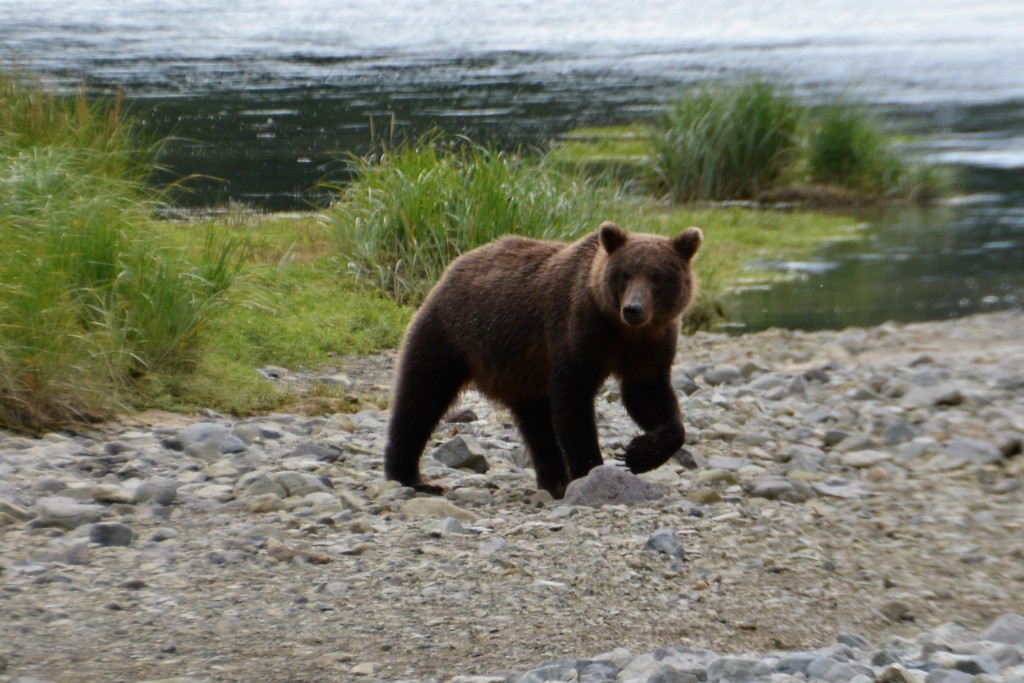
These are magnificent beasts by any measure but to be so close to them in their natural hunting environment was beyond belief
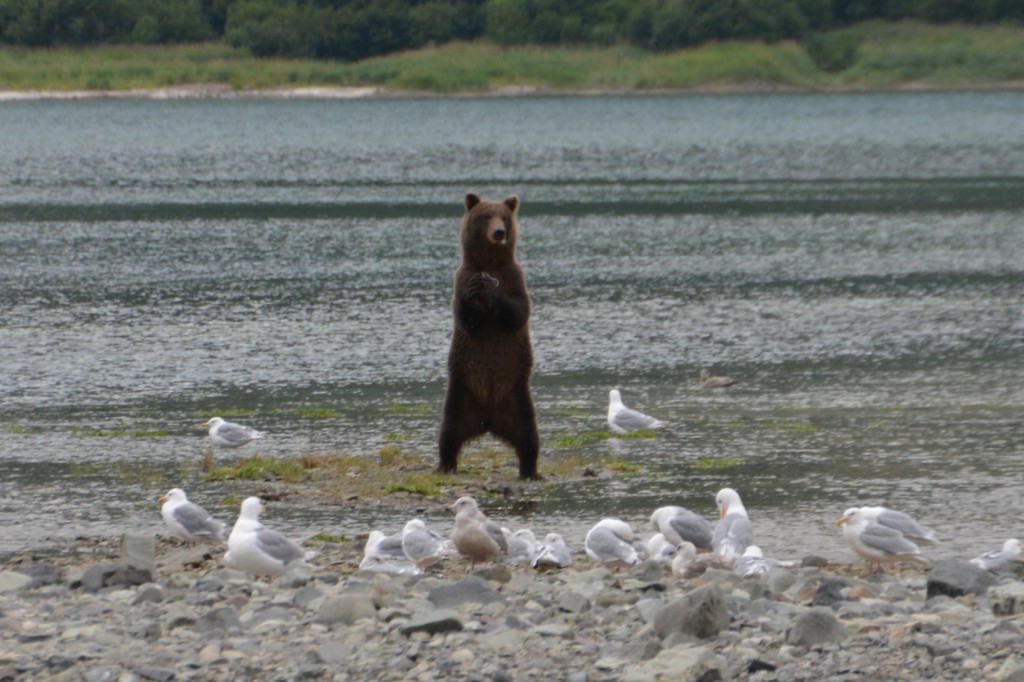
Look at me, look at me! This guy stood up on his hind legs, probably to get a better view of us in the middle of his fishing
We stood there for two hours, absolutely spellbound by what we saw, witnessing nature so close and so overwhelming that it was hard to believe what we saw. We came to learn quickly that bears appeared from the high grasses on the stream’s banks from all directions, would fish for a while, maybe drift off, only for other bears to appear. Sometimes we would be watching a bear on the stream’s banks only for one of us to turn around and say “there’s another one behind us”.
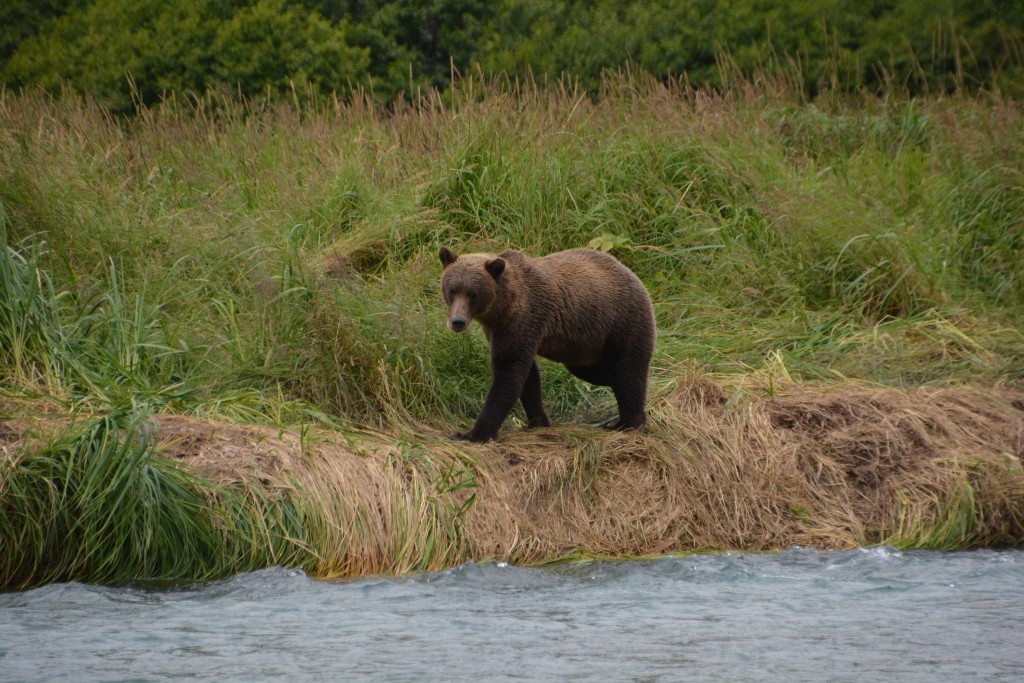
This handsome guy would stalk the stream’s shores until he saw something he liked. Most amazing of all, we’re only 50 feet (15 metres) away from him on the opposite bank.
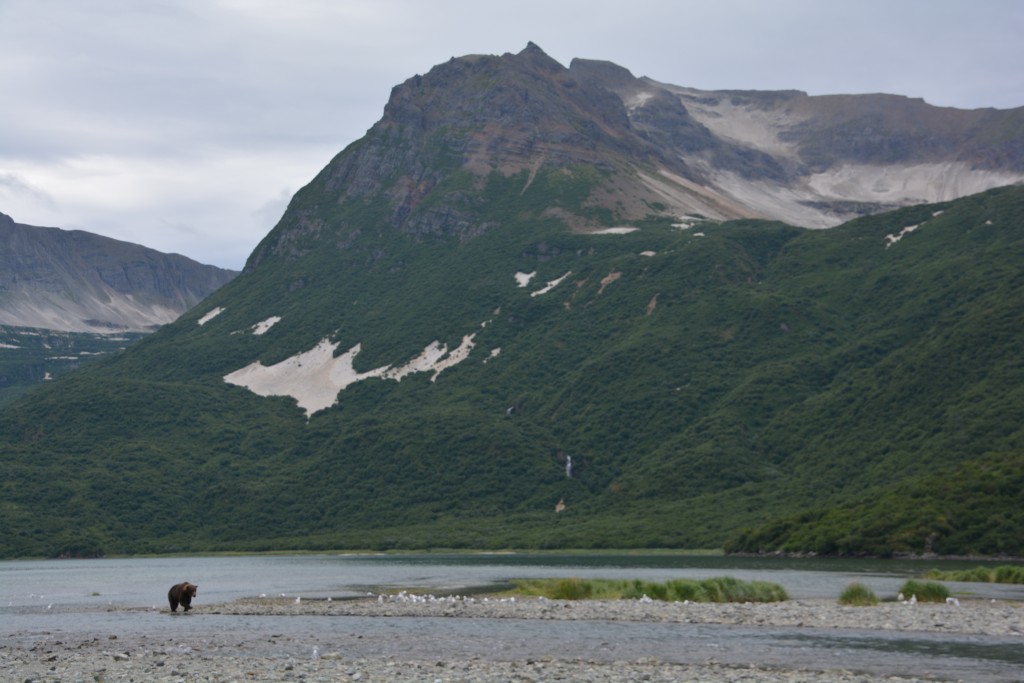
Sometimes we had to look up to just appreciate what a remote and beautiful place we were in. Those white patchy areas are not snow, they are ash from a huge volcanic eruption that happened nearby in 1905
We saw two mothers, each with a set of twins, one of which led her cubs so close past us we were compelled to take a few steps back to give her room. She and her family would have been less than 10 metres, or 30 feet, from us. But amazingly, none of the bears took any notice of us, even the huge boar males, and even though we (read Julie) might have been a little scared at times it just became natural to watch the bears fish at close range.
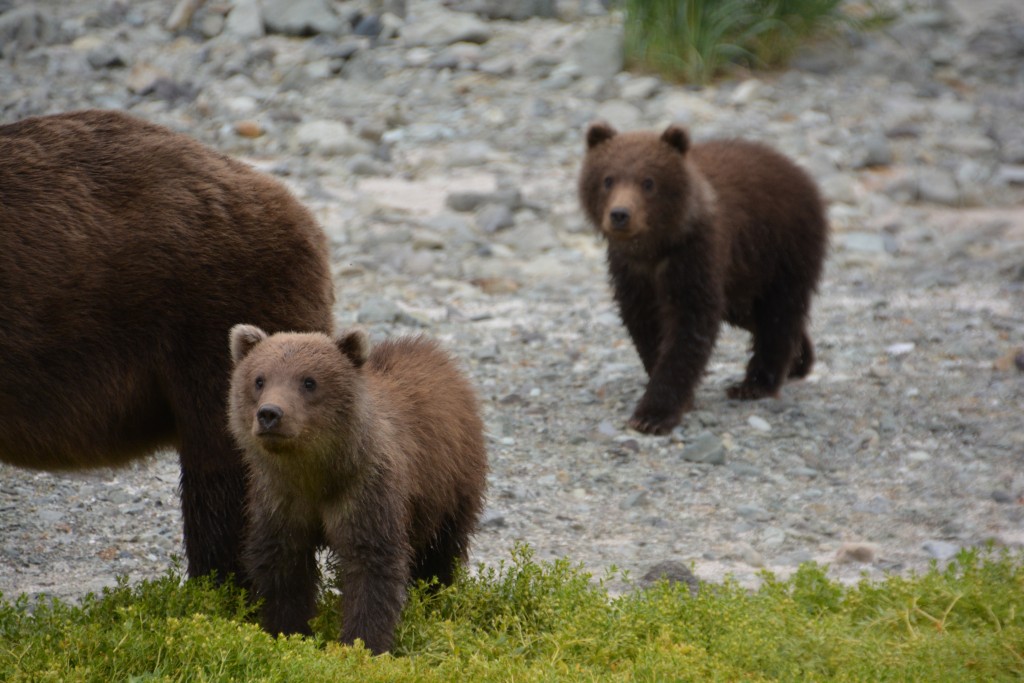
A face only a mother could love – wouldn’t you like to just pick one of these guys up and give them a big hug?
And did they fish! We were amazed at the different techniques the different bears would prefer. One bear, who we named The Fisherman, stood up on his hind legs and look down into the pool of water. When he spotted a fish he liked he would drop down on the fish with his paw and then pull him out. He did this repeatedly and rarely seemed to miss.
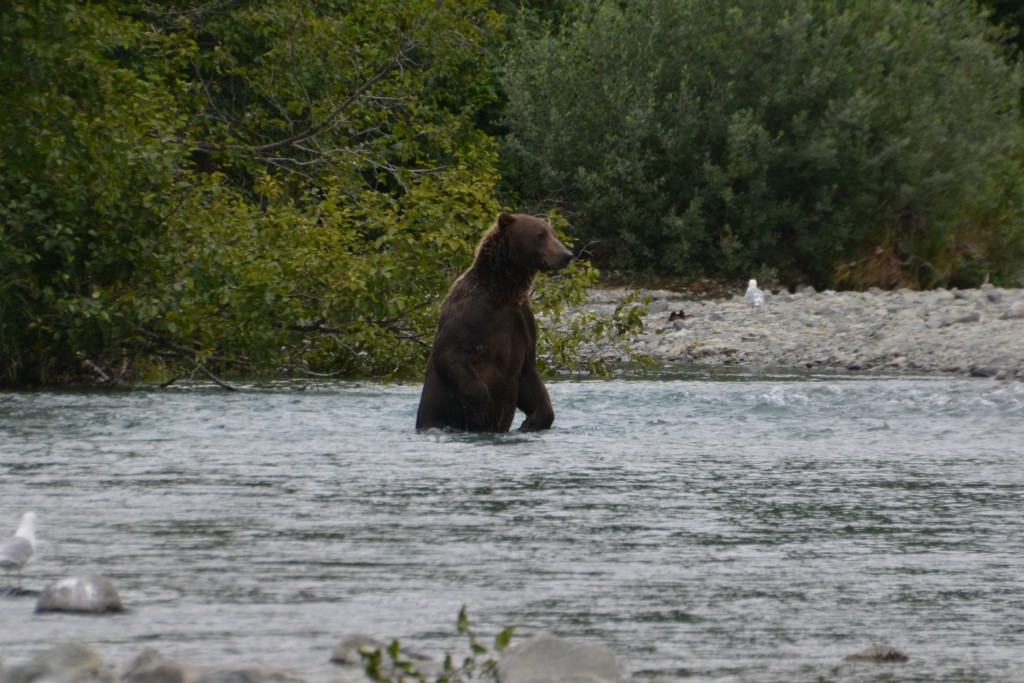
The Fisherman was a master of his craft, standing in this deep hole in the stream, looking for the right fish and then pouncing on it – he rarely missed
Another bear, clearly older and a bit more scarred around the face who we named Old Man, was a patient but savvy hunter. He would not rush the process but almost always came up with a fish by pouncing on the hapless humpy, once even sliding in from the bank. But we named other bears, like Blondie who was much lighter, more golden in colour, and was good at chasing salmon in the shallow waters until they grounded themselves in the shallow gravel so he could easily pick them up.
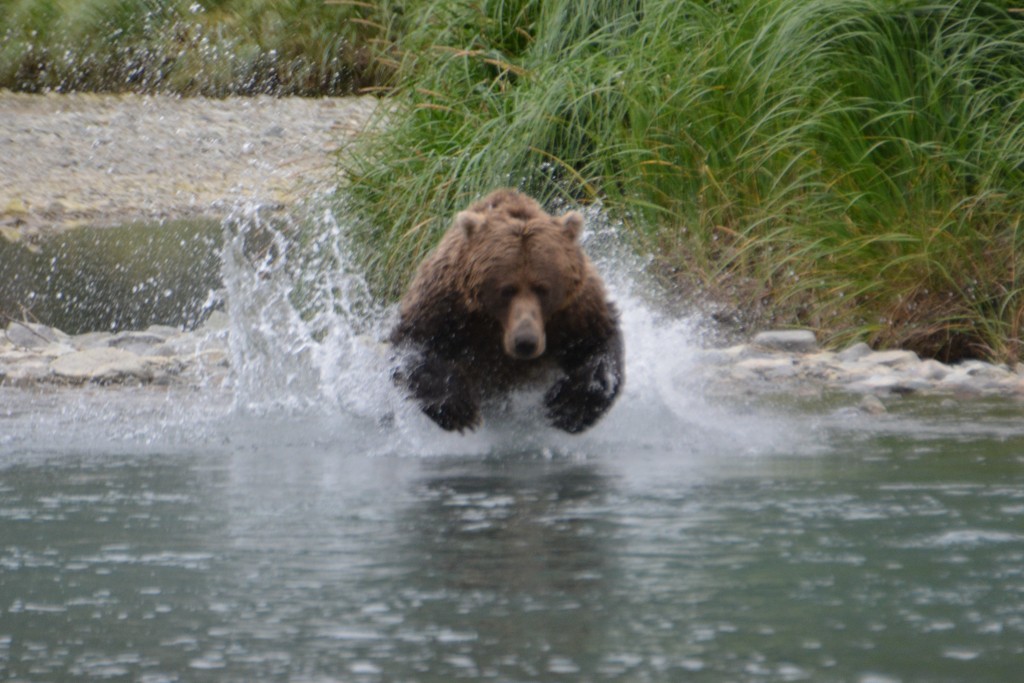
My favourite moment of the whole day – The Old Man leapt into the water with style and finesse and came up with a beautiful pink salmon
And then there was White Tips who had little blond tips on the end of each ear. He liked to pace up and down the stream’s bank, then splash in great fury, almost hoping he would catch a fish. There was also a bear who was almost black like a black bear. They all kept their space from each other except on one occasion when sharp words, angry growls, were exchanged.
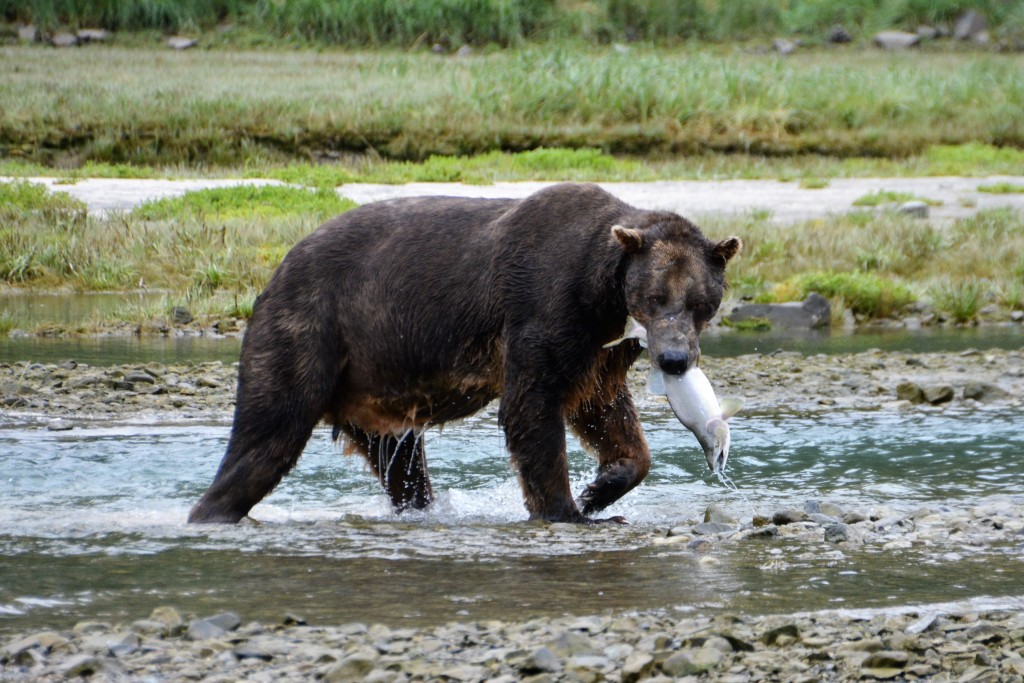
This darker bear hunted by chasing the salmon into shallow water so he could simply reach down and pick them up
No words can describe this extraordinary experience – flying into a remote bay of a trackless national park, seeing huge brown bears up close as they fished for salmon, knowing time was getting short before the bears prepare for their hibernation in a month or so. For two hours we stood in wonder, and took more than two hundred photos, while we watched this spectacle. By the end of it all we were high enough to fly back to Kodak without Scooter and his float plane.
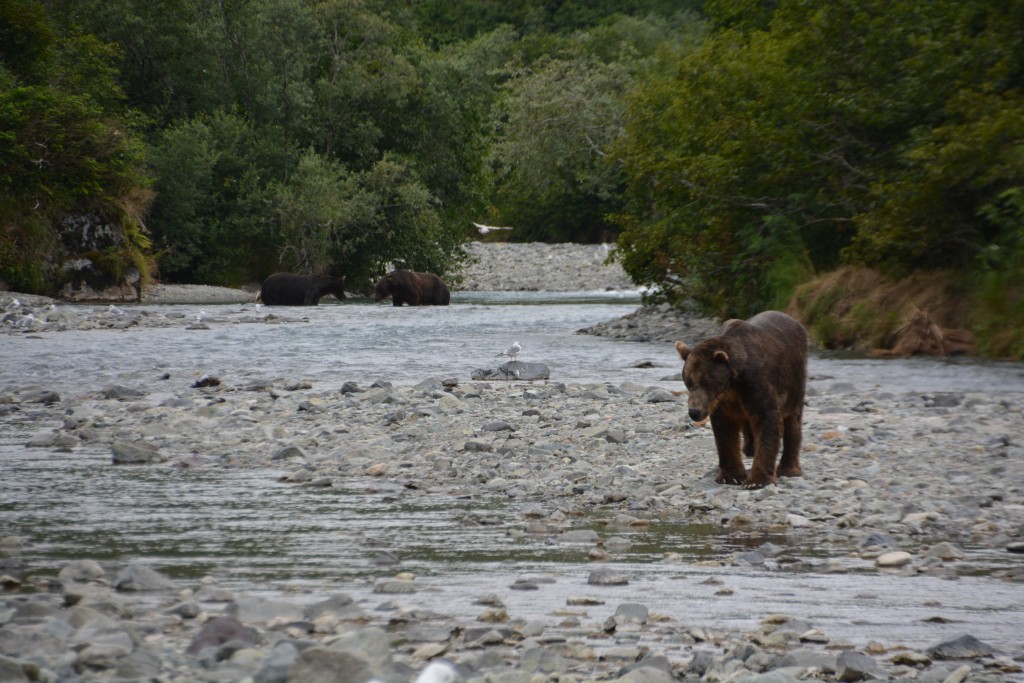
On many occasions we would be tracking a few different bears, sometimes all around us, and it was hard to decide which scene to watch
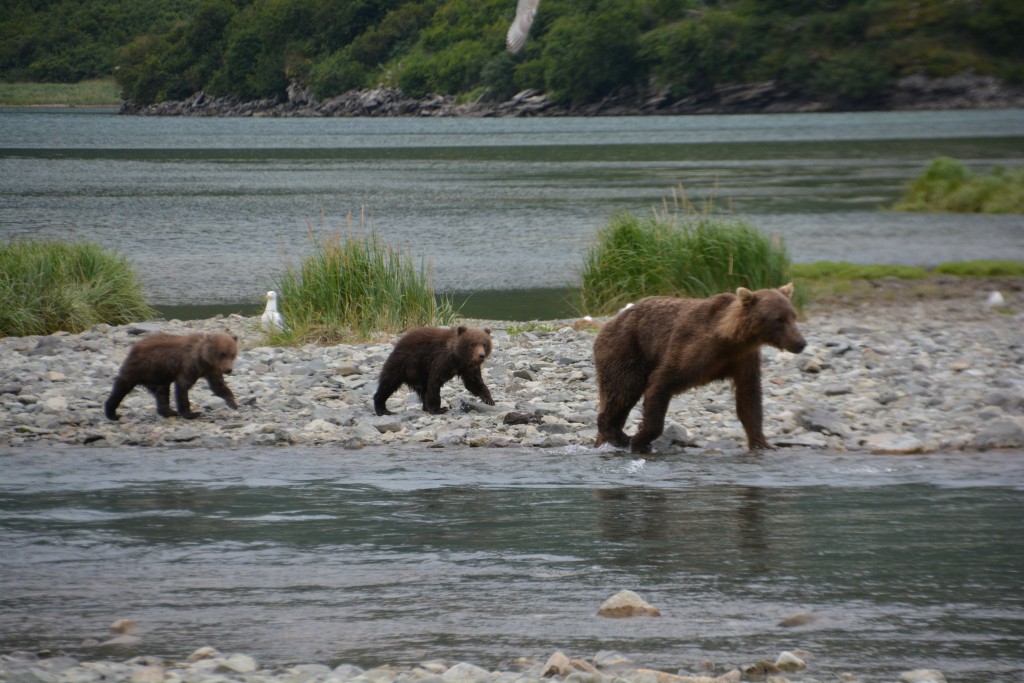
This mum and cubs fished on the opposite bank but she was very careful not to lead her bubs too close to the large male bears
We jumped back on the Tustemena for the 14 hour return ferry to Homer, celebration beers over dinner, sleeping well on the padded public bench seats with visions of brown bears and pink salmon swirling in our heads. Alaska continues to deliver the goods!
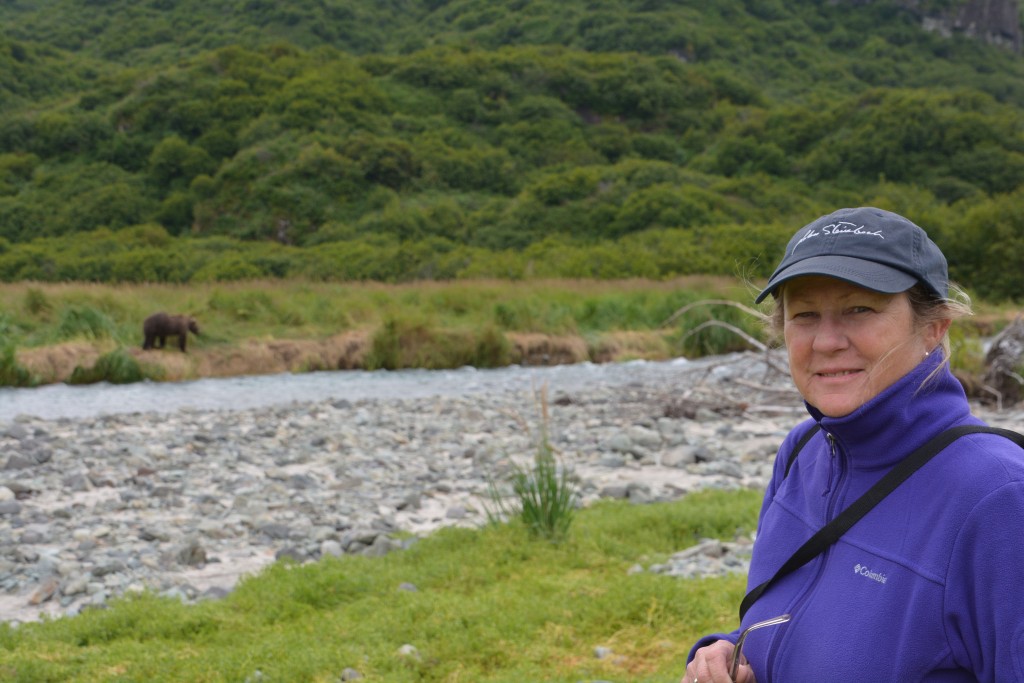
It doesn’t get any better than this – especially with a bit of water separating the bear from this yummy dinner
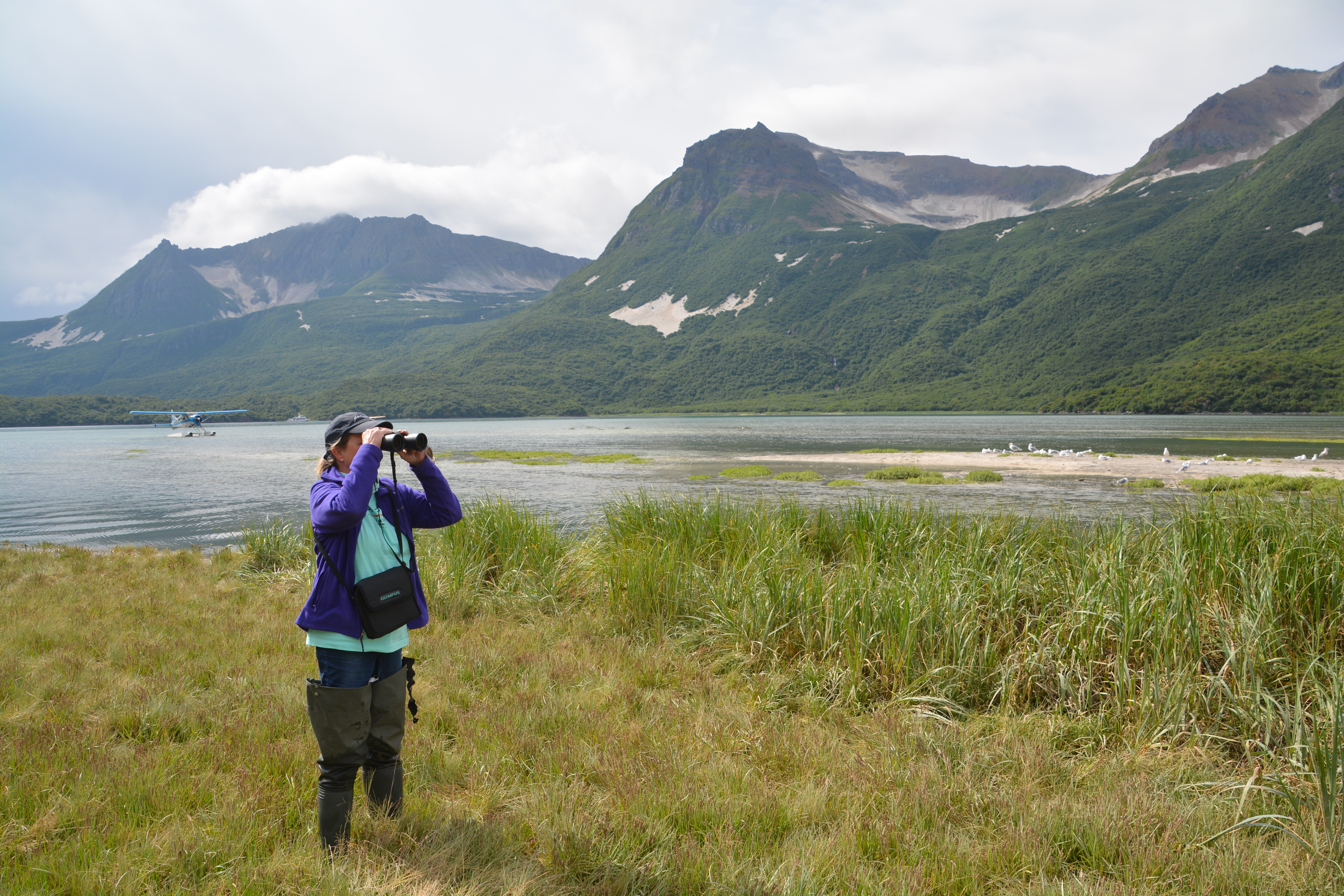
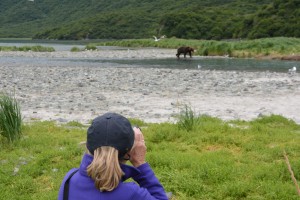
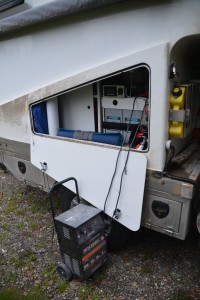
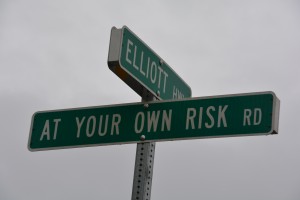
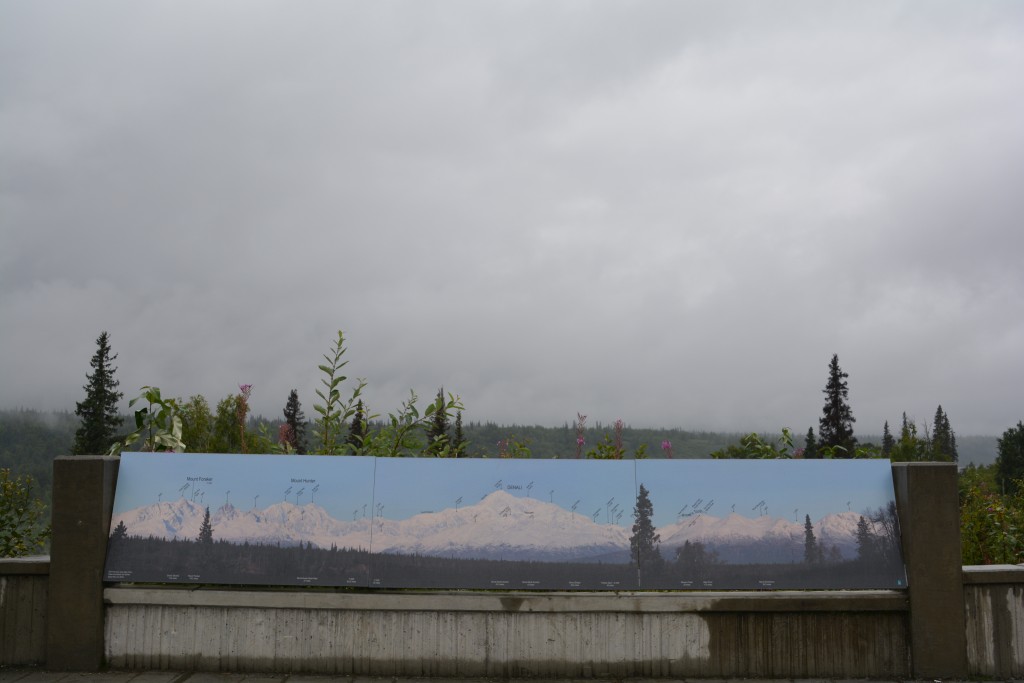
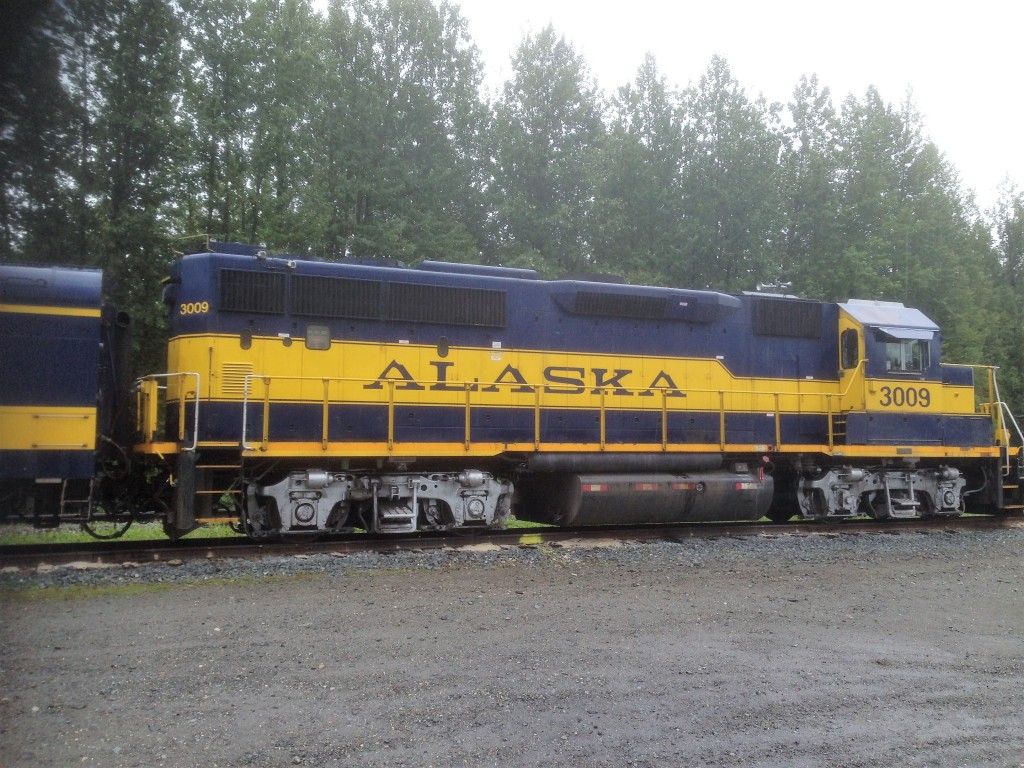

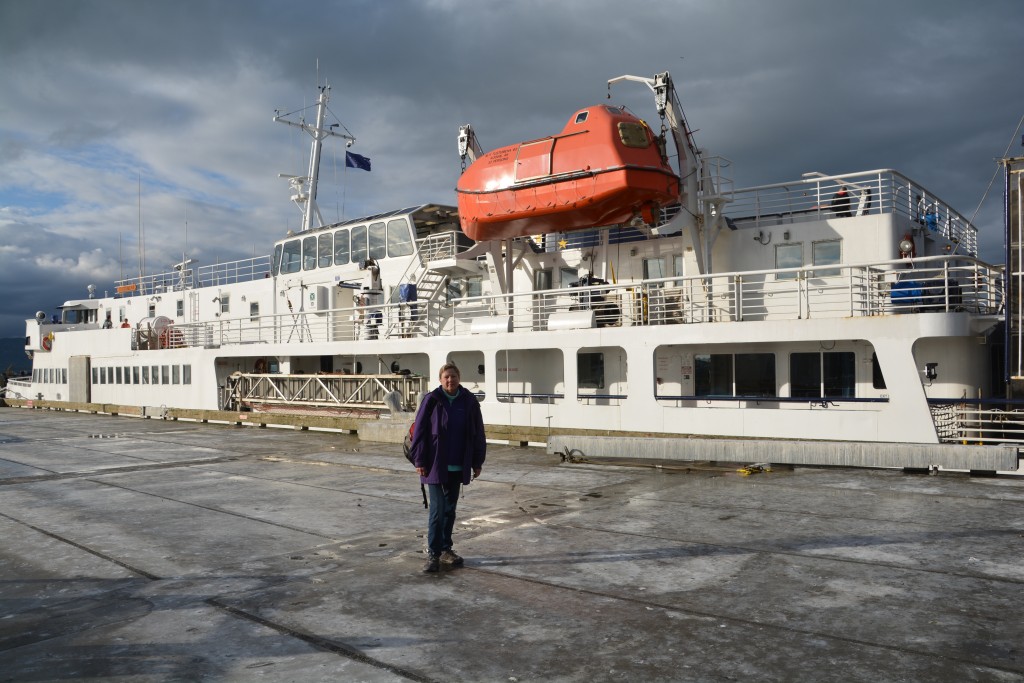
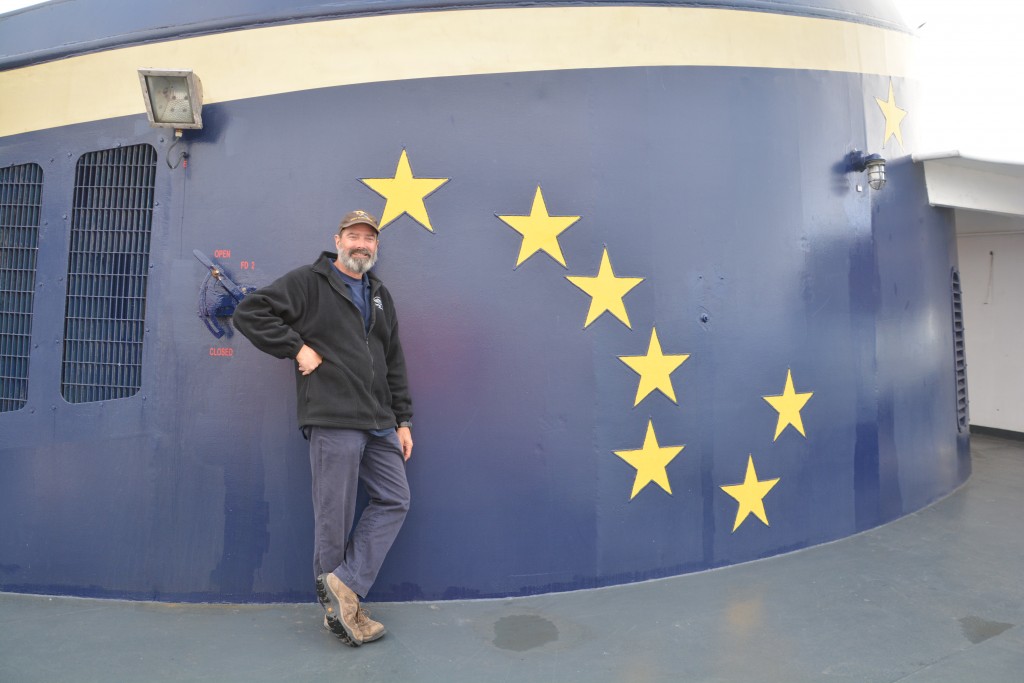

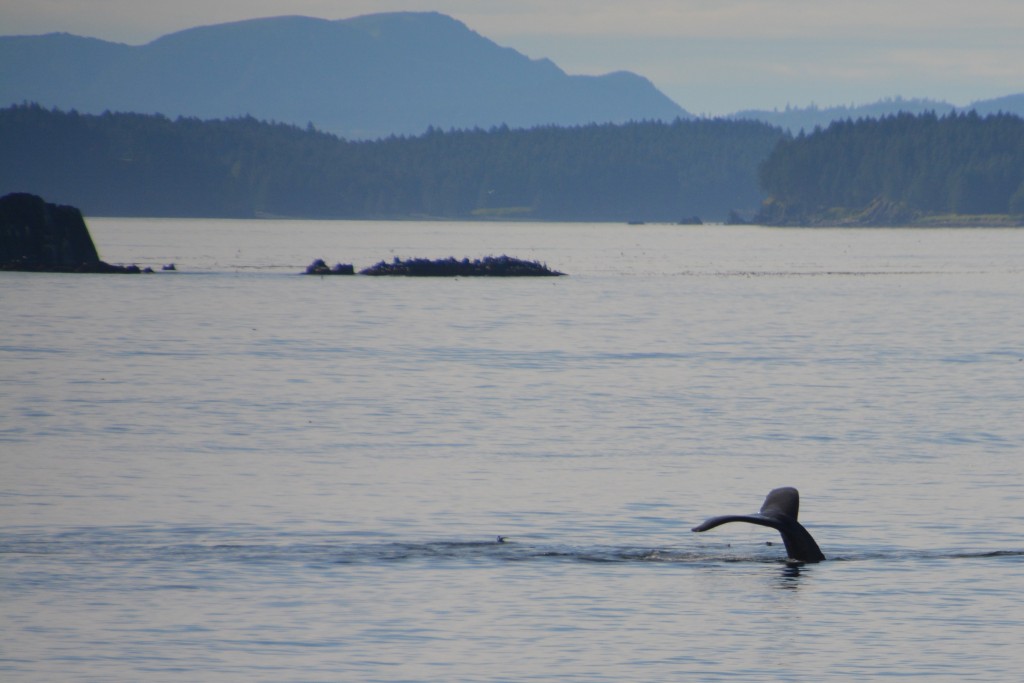
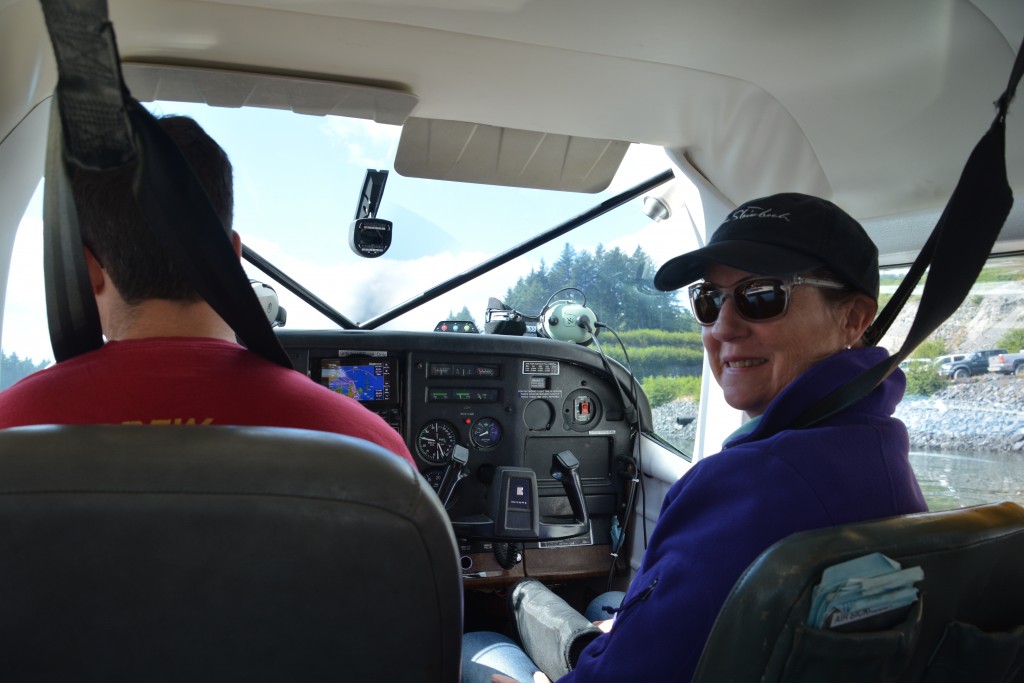
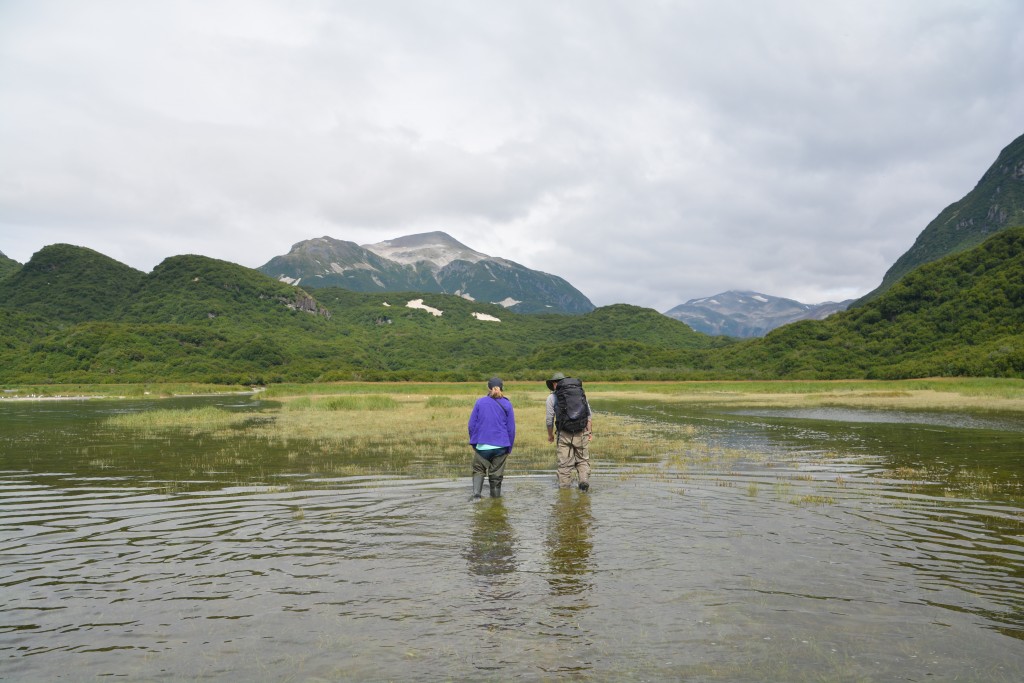
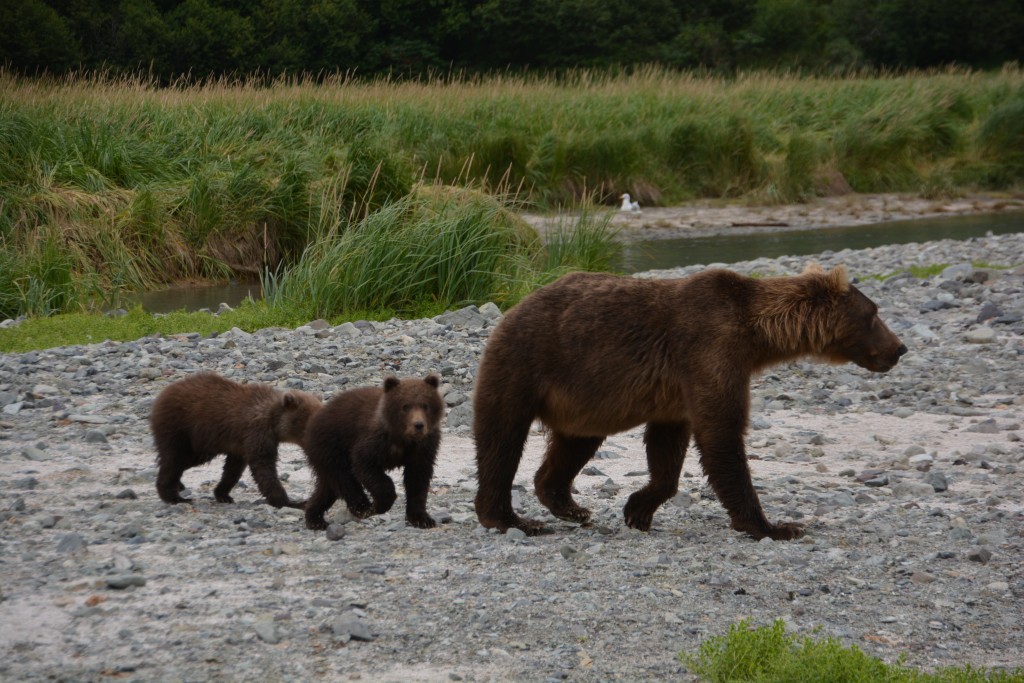

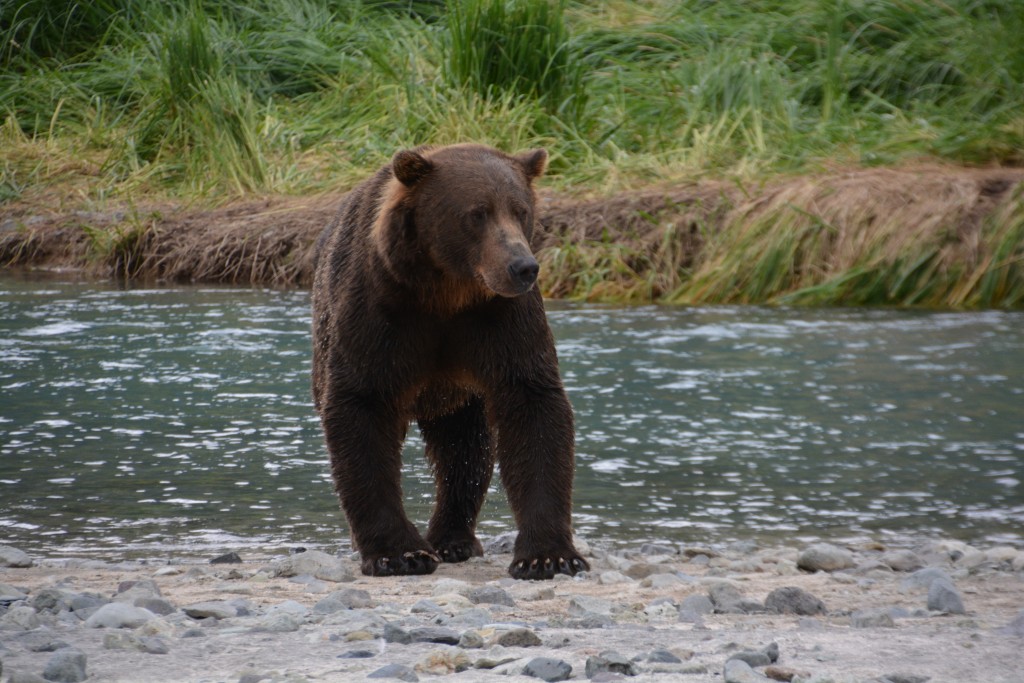
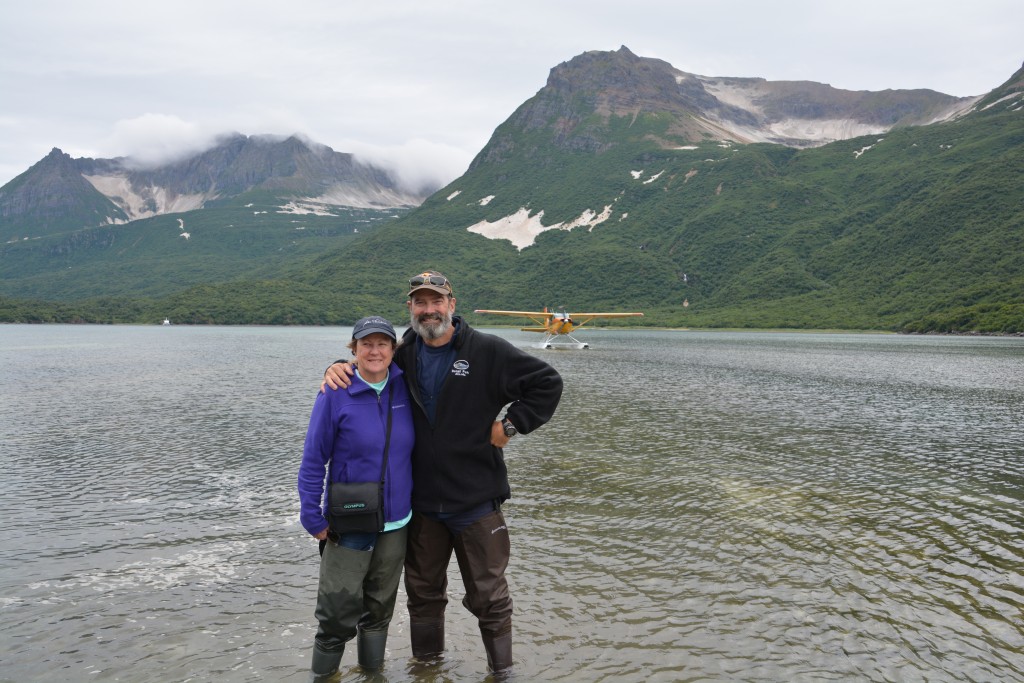

Absolutely amazing. What a way to get the adrenaline flowing. Love it!
Hi Anne and Steve,
Yes, our afternoon with the big brown bears has been one of the biggest highlights of our entire trip. Stepping back to give a mother and her two cubs space to walk by was a moment to remember!
Super story and photos Bill and Julie
Hi Tracy, great to hear from you. We hope you and Les are living it up! We’re totally in bear mode after our fabulous time in Katmai National Park, hopefully more to come (at a safe distance!).
Take care,
Bill